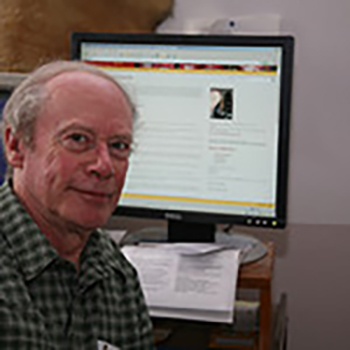He joined the Brown faculty in 1958, first as a visiting lecturer and then as research associate, assistant professor, and associate professor, before earning a full professorship in the Division of Engineering in 1968.
 Richardson was elected a Fellow of the Royal Society in 1986, and was awarded the Jung Prize in Medicine in 1987. He was a recipient of the Alexander von Humboldt Senior Scientist Prize in 1976. Among his many fellowship and awards, he was a Founding Fellow of the American Institute for Medical and Biological Engineering, a Fellow of the City & Guilds of London Institute and the American Society of Mechanical Engineers, an inaugural fellow of the Biomedical Engineering Society, and an honorary fellow of the Royal College of Physicians (London). Richardson was a member of the American Society for Artificial Internal Organs, American Society for Engineering Education, an honorary member of the British Atherosclerosis Society, and several other professional societies. He co-authored a book (with M. Steiner), "Principles of Cell Adhesion" (CRC Press, 1995). An alumnus of the Imperial College of Science, Technology and Medicine of the University of London, he earned his undergraduate degree in 1955, and Ph.D. in mechanical engineering in 1958.
Richardson was elected a Fellow of the Royal Society in 1986, and was awarded the Jung Prize in Medicine in 1987. He was a recipient of the Alexander von Humboldt Senior Scientist Prize in 1976. Among his many fellowship and awards, he was a Founding Fellow of the American Institute for Medical and Biological Engineering, a Fellow of the City & Guilds of London Institute and the American Society of Mechanical Engineers, an inaugural fellow of the Biomedical Engineering Society, and an honorary fellow of the Royal College of Physicians (London). Richardson was a member of the American Society for Artificial Internal Organs, American Society for Engineering Education, an honorary member of the British Atherosclerosis Society, and several other professional societies. He co-authored a book (with M. Steiner), "Principles of Cell Adhesion" (CRC Press, 1995). An alumnus of the Imperial College of Science, Technology and Medicine of the University of London, he earned his undergraduate degree in 1955, and Ph.D. in mechanical engineering in 1958.
Professor Richardson continued to serve Brown University as a member of the Institutional Biosafety Committee until his death.
Professor Emeritus Barrett Hazeltine provided a brief remembrance of Peter: “Peter was very smart and Peter made major contributions to Faculty Governance. Peter knew so much about so many subjects. He had original ideas about incorporating finance into engineering education even in the 1960’s. He could describe the details of steam locomotives in South Africa. He mastered Robert’s Rules of Order. And much more.
“Biomedical engineering at Brown really started with Peter’s collaboration with Pierre Galletti, working on artificial organs, building devices and creating models. Peter could do both. Peter was chair of what is now called the Faculty Executive Committee and led a major effort there developing processes for faculty governances. His emphasis on looking at the numbers was a major contribution to that office. Every Brown faculty member who attends faculty meetings in the last few decades remembers Peter sitting at the table in front as Parliamentarian and offering gentle advice.
“Peter received much professional recognition in his life. When he returned from England after election to the Royal Society, I remember him saying that he had found the signature of Isaac Newton on the same roll he had just signed. He was a good friend—cheerful, thoughtful, reassuring. He offered good advice without insisting on his ideas. He was great fun to be with because of his original ideas and his good spirits. I will miss him greatly.”
Professor Kenny Breuer ’82 added, “I took ENGN 176 - design of engine and turbines from Peter, and remember that he led the ‘autopsy’ of a car engine, in which we dissected an automobile engine from a recently scrapped car - he led this activity like a surgeon - dressed in his mechanics coveralls.”
He is survived by his former wife, Anne Richardson; daughter Margaret Richardson and her husband Scott Duncan; son, Simon Richardson; three grandsons and two step-grandchildren.
A memorial service is being planned for a later date. Memorial donations to the Brown University Scholarship Fund are suggested in lieu of flowers. Donors may contact Rick Marshall '71, Director of Development for the School of Engineering at 401-863-9877 or email him at Richard_Marshall@brown.edu. For the complete obituary, please visit pontarellimarinofunerals.com.